Thangkas are iconographically and structurally complex devotional images used in households, monasteries, temples and other traditional locations. The two primary sections, the painting and the mounting, are integral to the icon. The painting is done on a fine cloth, which is sewn into a textile mount comprising multiple layers and sections of textile finished at the top and bottom with a stiff bar. The face is protected with a fine cover cloth secured at the top and held open with cords and ribbons. The thangka is consecrated repeatedly; empowerment symbols may be written on the reverse of the painting.

During use, thangkas acquire patinas of soot, oil and water stains from exposure in temples and the elements. The thangka is rolled up for carrying. The repeated rolling and unrolling of a multilayered structure of brittle paint and stiff textile causes considerable damage to the paint and textiles. If handled in their current state, many of the Field Museum thangkas would loose more paint particles and textile fragments, and develop further breaks in the painting and mount textile.
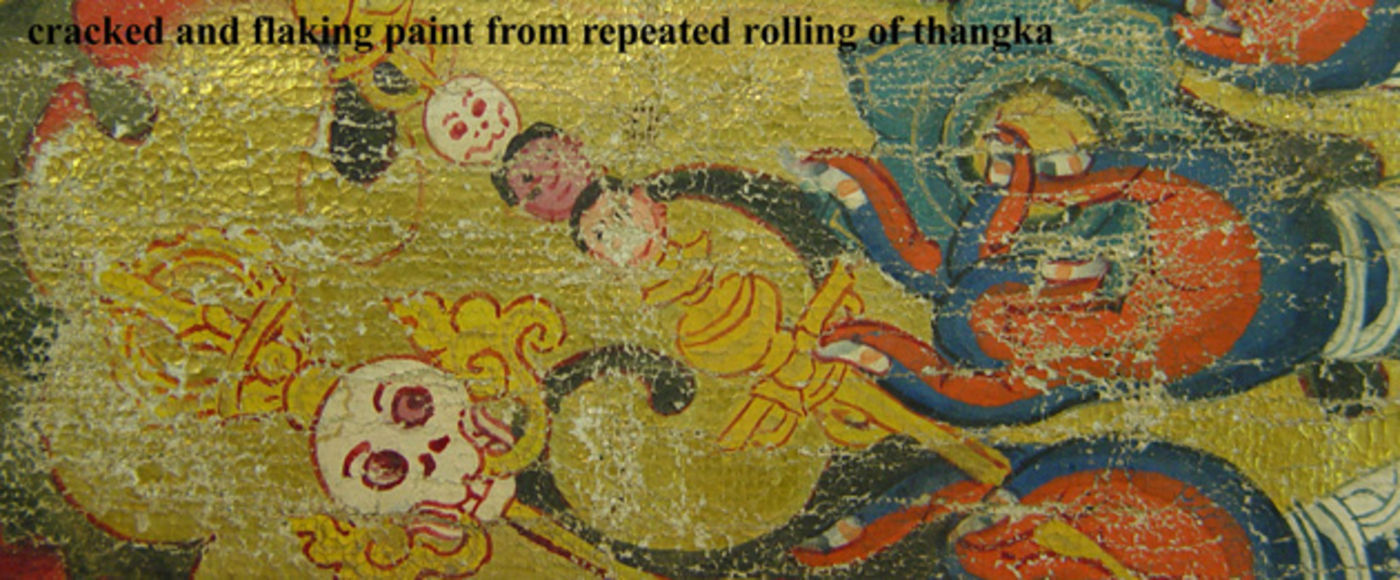
The Field Museum thangka collection comprises 382 thangkas, of which 373 were collected by Anthropology Curator Dr. Berthold Laufer in1909 during the 3-year Blackstone Expedition to China and Tibet. The collection, amongst the three largest in the United States, has a number of thangkas of very high cultural and artistic significance, but is especially important for its anthropological value. Collected during one year, the collection provides a cross section of thangka use in eastern Tibet at that time: it includes stylistic and functional thangka sets, household and temple thangkas, new and well used thangkas, thangkas of exquisite and humble aspect. The collection is also significant for containing a high proportion of Bon thangkas – those whose images relate to popular folk culture in which features of the earlier indigenous religions in Tibet were incorporated into Buddhist iconography. These have received less scholarly attention than other categories of thangkas and it would be valuable to make the collection stable enough to be available to scholars.
Collection Survey
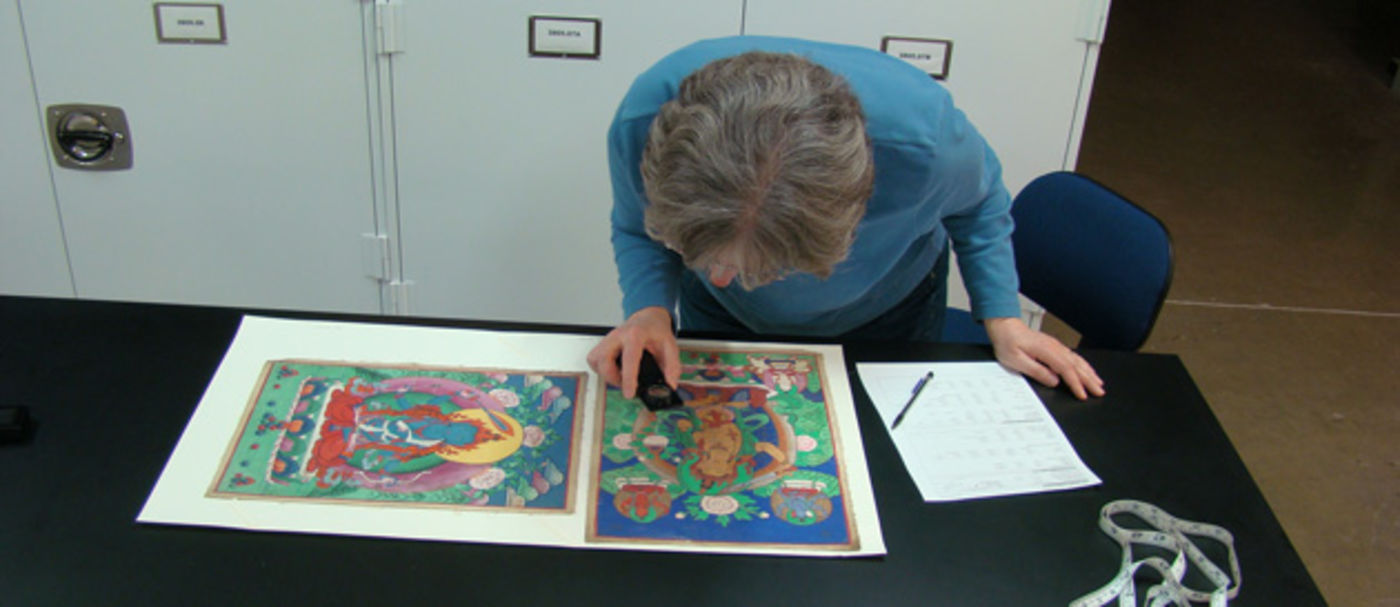
The Anthropology thangka collection comprises about 140 traditionally mounted paintings, 175 unmounted paintings, 30 scroll mounted paintings, and 15 framed or otherwise previously restored or nontraditionally mounted paintings. We are conducting a condition survey of the whole collection to determine the treatment needs of each and develop a budget and strategy for funding. During the survey, preservation of the thangkas and paintings is improved by archival housing, and high resolution digital imaging is done to document their condition, document the painted images to make them more available to scholars. The survey includes details on presence and condition of each component of the mount and painting, and an estimate of the type and time of conservation treatment needed.
Rehouse to reduce factors causing damage to the thangkas.
A unique housing system was designed and implemented for the traditionally mounted thangkas. Most damage to the thangka occurs as it is rolled and handled, cracking and flaking the paint and creasing and tearing the textile. A special set of 12 thangkas depicting the Dalai Lamas and Arhats are stored flat in map cases to eliminate rolling. Some other thangkas were previously restored and mounted in such a way that they are extremely stiff; these can only be housed flat in boxes. We do not have room to store the whole collection flat, so remaining mounted thangkas have been rolled on dowels with 2” of soft padding (soft to accommodate cockles in the painting, and large diameter to reduce the curvature of the rolled painting). The dowels are suspended in clam shell archival boxes so that the weight of the thangka is not carried by parts of the painting. The clam shell boxes protect the thangkas from dust, light and pressure and allow efficient use of storage space.
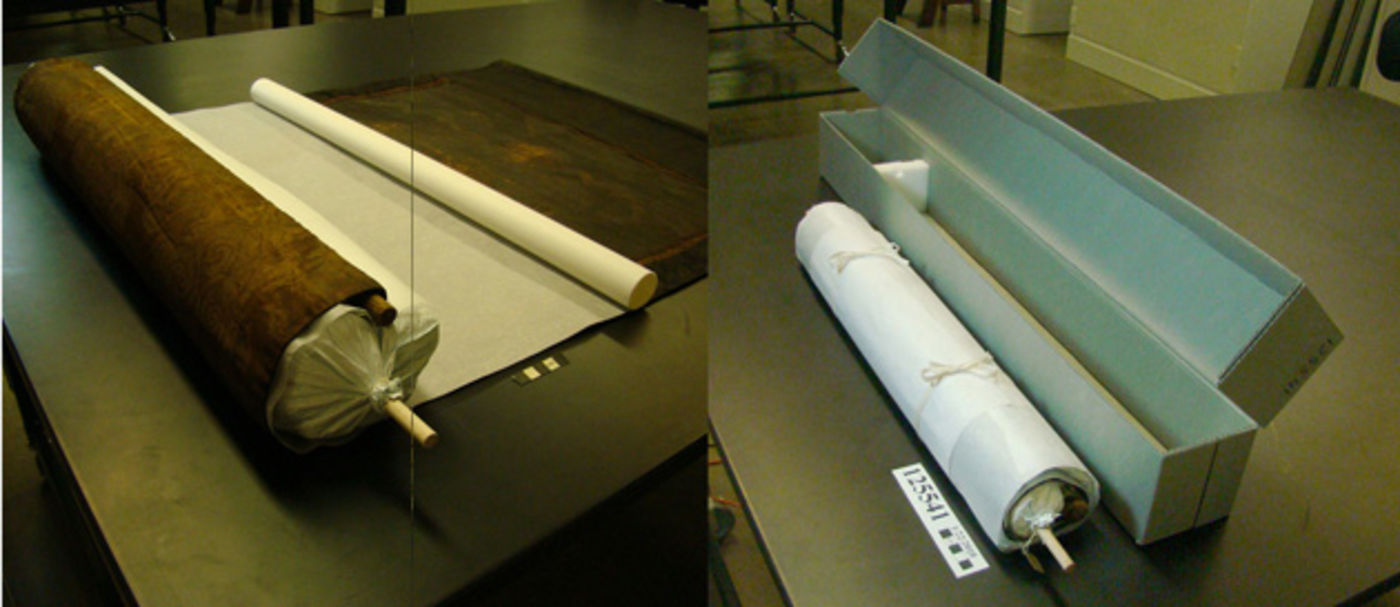
The 175 unmounted paintings were previously held with corner strips on heavy paper sheets and put in a glassine folder. These materials were tested and found to be archival (neutral pH), but provided insufficient support and were difficult to handle. Drop front archival boxes were made to accommodate the folders, providing a rigid, dust and light free storage environment.
High resolution digital imaging of obverse and reverse of each thangka to assist scholars in low impact access to the thangkas.
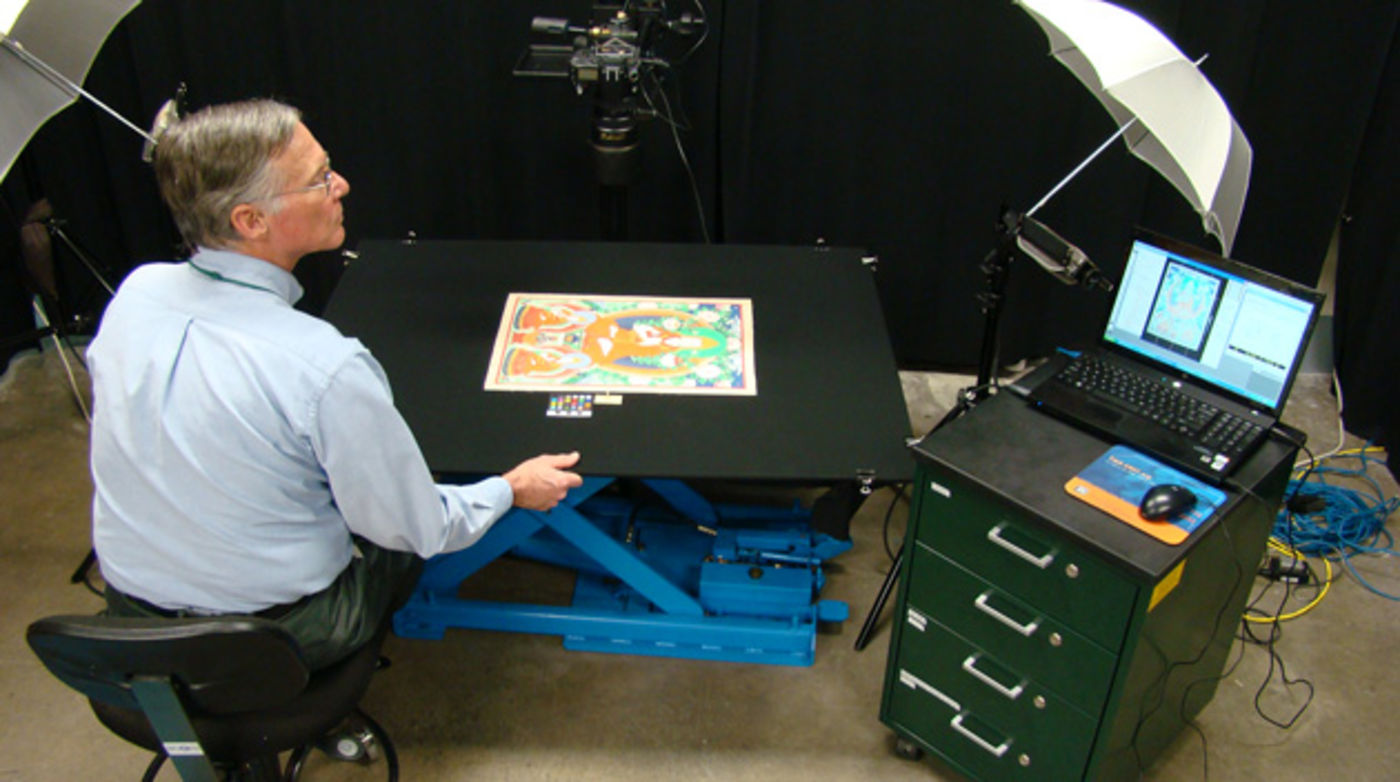
During the survey, high resolution tiff images are made of obverse and reverse, in incident and raking light, of every thangka surveyed. The availability of digital images renders the thangkas potentially accessible to scholars around the world and reduces the amount of damaging handling to which the thangkas are subjected. Imaging also documents the thangkas’ condition at this point in time, greatly increasing our ability to detect changes in condition over time.
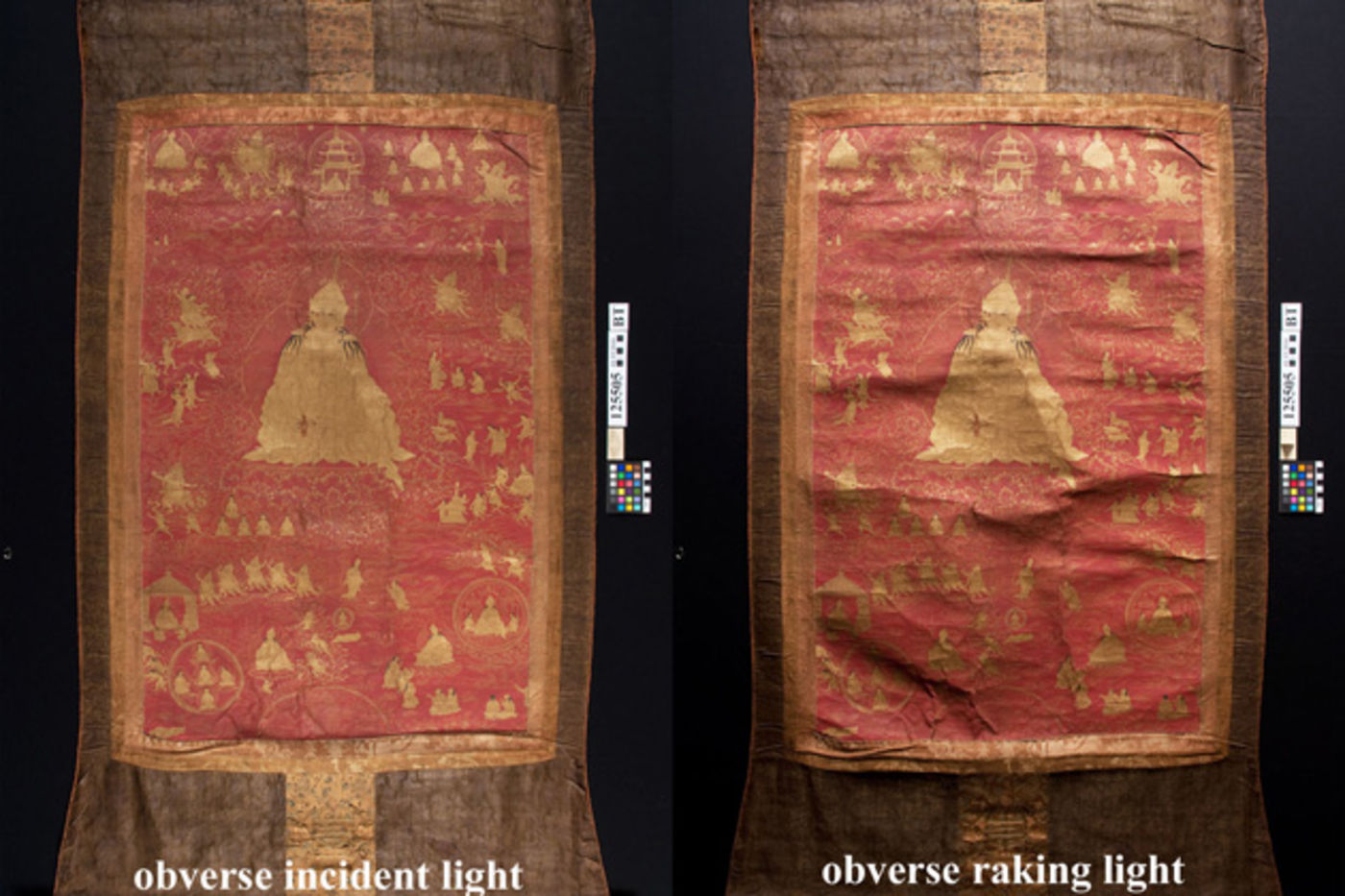
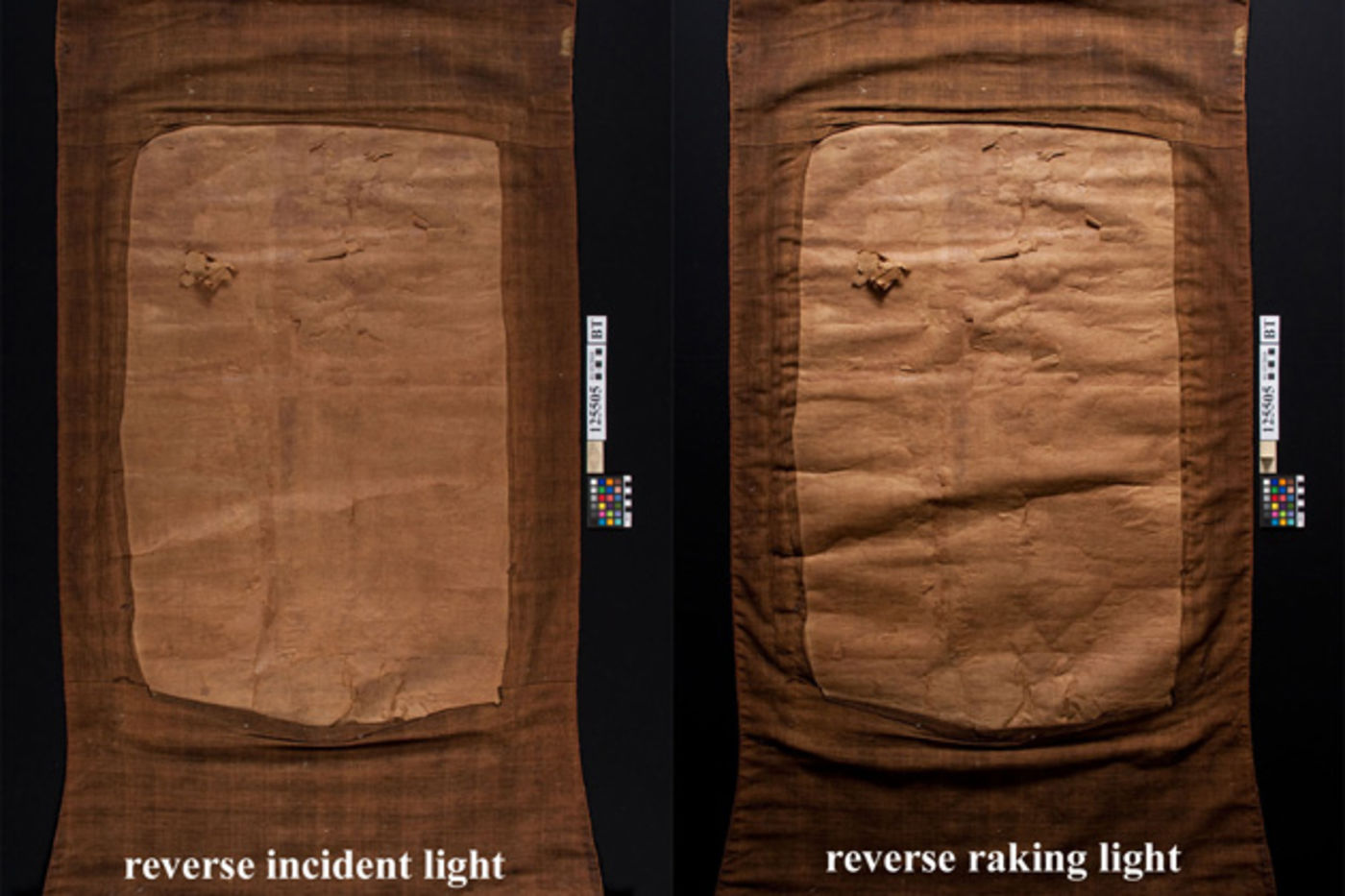
Images of the Field Museum paintings are posted on the website of Himalayan Art Resources (www.himalayanart.org) curated by Jeff Watt and David Pritzker.
Develop conservation treatment protocols appropriate to the specific thangka styles and types of damage to allow accurate estimate of resources needed.
Traditionally mounted thangkas were of two styles: those mounted in plain, moderately course cotton or wool cloth; and those mounted in brocade fabric with fine silk covers and ribbons. The coarse cloth tended to have considerable loss from rodent eating, and to have tears at the top and bottom. The brocade and silk tended to have tears and losses where the fabric was stressed. In both cases, standard treatment comprised flattening and aligning the fabric and attaching a support patch or lining to the reverse using sewing techniques. The fabrics and threads used matched the weight of the original fabric – polycotton for the coarser cloth and silk crepeline and hair silk thread for the finer silks and brocades.
The support fabric of some paintings was torn or fractured. These were treated with a heat reactivated patch on the reverse; the weight of the patch paper matching the weight of the painting support fabric and thickness of ground.
Many paintings suffered losses and instability from cracking, cupping and flaking of the ground and paint. Most paint is matte and thick, considerably restricting the type and application of consolidant that can be used to secure the paint but not cause darkening or sheen. Repeated applications of a very dilute methylcellulose paste in water/ethanol was found to penetrate the paint, provide enough plasticity to allow setting down of cupped paint, and dry without altering the paint appearance.